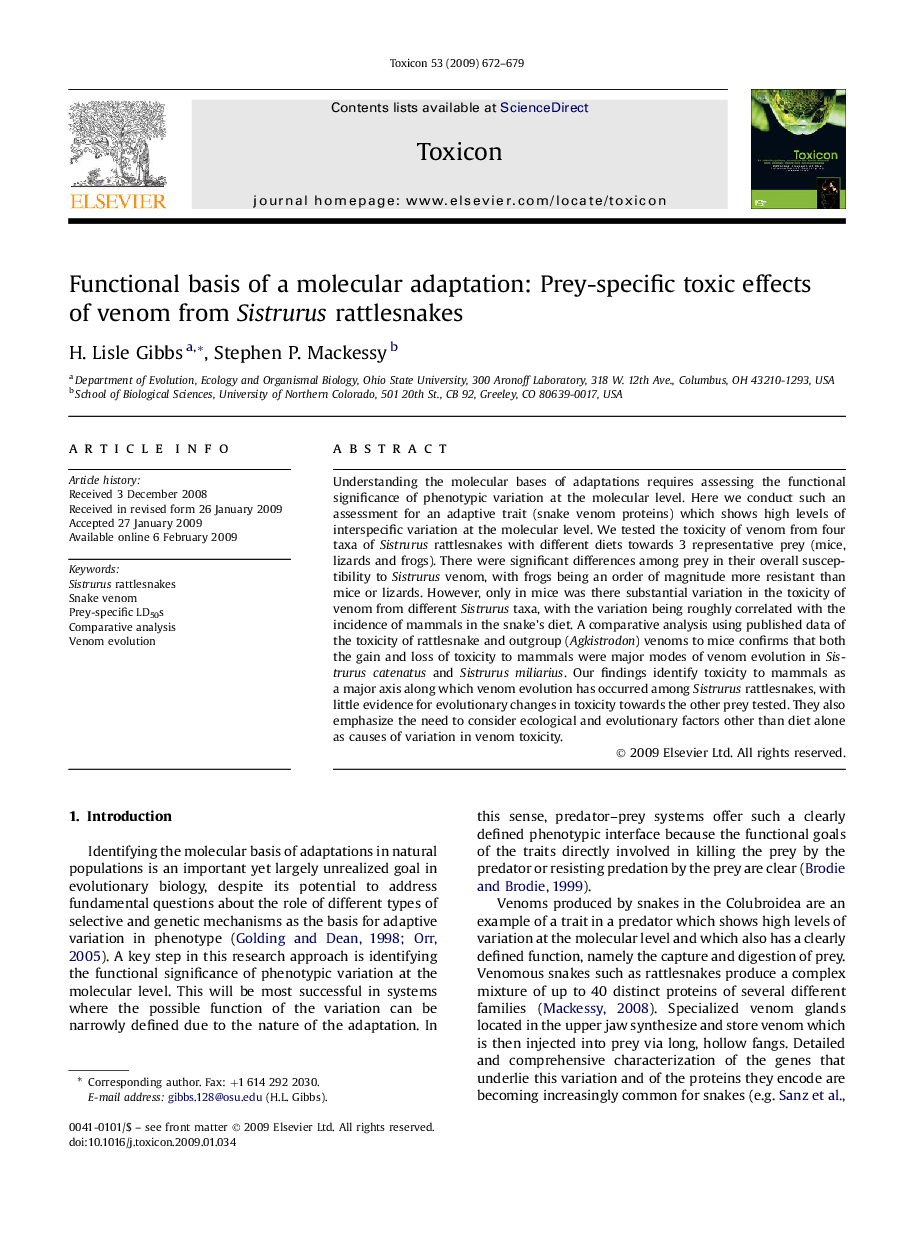| کد مقاله | کد نشریه | سال انتشار | مقاله انگلیسی | نسخه تمام متن |
|---|---|---|---|---|
| 2065089 | 1076904 | 2009 | 8 صفحه PDF | دانلود رایگان |

Understanding the molecular bases of adaptations requires assessing the functional significance of phenotypic variation at the molecular level. Here we conduct such an assessment for an adaptive trait (snake venom proteins) which shows high levels of interspecific variation at the molecular level. We tested the toxicity of venom from four taxa of Sistrurus rattlesnakes with different diets towards 3 representative prey (mice, lizards and frogs). There were significant differences among prey in their overall susceptibility to Sistrurus venom, with frogs being an order of magnitude more resistant than mice or lizards. However, only in mice was there substantial variation in the toxicity of venom from different Sistrurus taxa, with the variation being roughly correlated with the incidence of mammals in the snake's diet. A comparative analysis using published data of the toxicity of rattlesnake and outgroup (Agkistrodon) venoms to mice confirms that both the gain and loss of toxicity to mammals were major modes of venom evolution in Sistrurus catenatus and Sistrurus miliarius. Our findings identify toxicity to mammals as a major axis along which venom evolution has occurred among Sistrurus rattlesnakes, with little evidence for evolutionary changes in toxicity towards the other prey tested. They also emphasize the need to consider ecological and evolutionary factors other than diet alone as causes of variation in venom toxicity.
Journal: Toxicon - Volume 53, Issue 6, May 2009, Pages 672–679